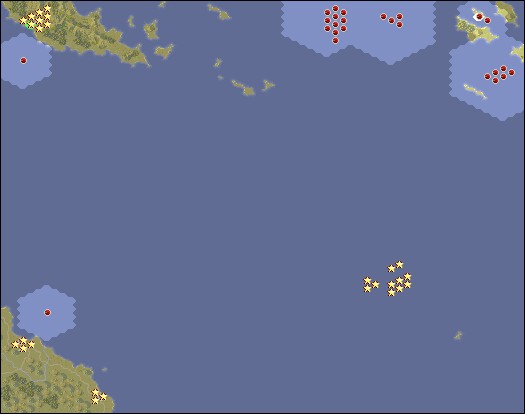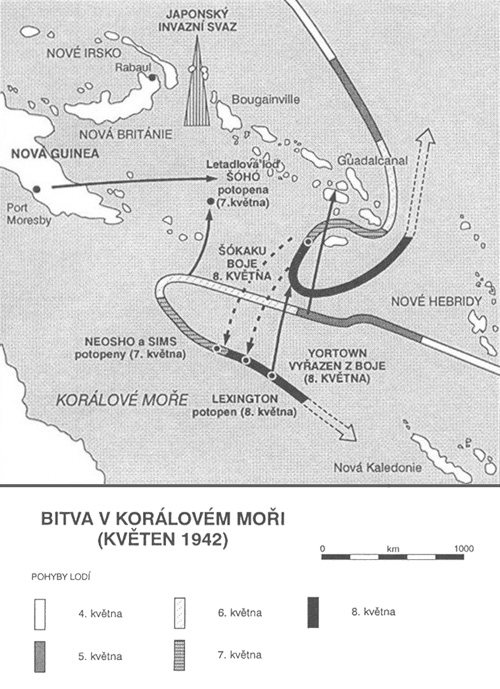 When you move the mouse pointer over the map, unit name, strength and coordinates are displayed as a label. When you press terrain button object name is displayed (city, river, sea, ...) |
Coral Sea
5.5.1942 - 8.5.1942
PacPG: 5.5.1942 - 11.5.1942
Scenario Map:
|
|
|
Changes and corrections of map:
|
Scenario author: Scenario origin: Last revision date: |
stanny 18.11.2005 8.3.2011 |
First release: Revision released: |
4.4.2011 ( Relase 02 ) - |
| This map is included in original PacG as so-called "Naval tutorial". Probably because it is very, very sales and had to be completely remade. The map was very small, with no strategic points and for our purposes totally inappropriate. Therefore created a new map, large, where the Japanese must occupy Port Moresby and the American task force trying to prevent them ... |
Original map:
|
|
|
Historic overview:
Article on Czech Wikipedia Article on English Wikipedia
| ||||||||||||||||||||||||||||||||||||||||||||||||||
Game play matters:
| Campaign play: Lose means move to Guadalcanal, Minor victory leads to scenario New Guinea 42. In case Major victory is possible to choose next battlefield between New Guinea 42 and Midway. Scenario rarities: In the Coral Sea is located near a main US task force empty American transport ship accompanied by a destroyer. It is the tanker Neosho and destroyer Sims, that at the beginning of engagement Japanese recon fatally mistook for the main American task force. |
Scenario data:
|
Map size: 66 x 51 hexes 20 turns, 3 turns per day Version: PacPG 1, Starting side: Axis, Campaign: Japanese campaign, Order in campaign: 9. |
||||||||
|
||||||||
|
||||||||
|
||||||||
|
||||||||
|
Game time costingness of scenario: 18.82 % (product of units and turns numbers divided by difference between the most long and the most short scenario) |
||||||||
|
Number of Axis units: 42 units, from them are 17 core units and 25 auxiliary units 17 air units, 15 naval units and 10 ground units 0 of units are loaded to air transport and 9 to naval transport |
Transports Air/Naval: Axis - Allies 0/12 - 0/0 |
|||||||
|
Number of Allied units: 46 units 19 air units, 11 naval units and 16 ground units 0 of units are loaded to air transport and 0 to naval transport |
Initial prestige + every turn donation: Axis / Allies 100 + 0 / 196 + 48 |
|||||||
|
Max number of Axis units: 45 units, from them are 20 core units and 25 auxiliary units - on start of scenario is possible to purchase 3 unit (3 core + 0 auxiliary) |
||||||||
|
Max number of Allied units: 48 units - on start of scenario is possible to purchase 2 unit |
||||||||
Transport units:
|
||||||||
|
The same time period scenarios:
| Burma 1942 (PacPG 1), Coral Sea (PacPG 1), Corregidor (PacPG 2) |
| Airfield Burdekin River Coral Sea d´Entrecasteaux Island Fergusson Island Florida Island Goodenough Island Guadalcanal Gulf of Papua Mackay Display all mapnames in list... |
Tactical map (large & detail):

|
|
|
|
Basic map |
|
|
Map with unloaded transports and order numbers of units |
Battlefield map:

|
|